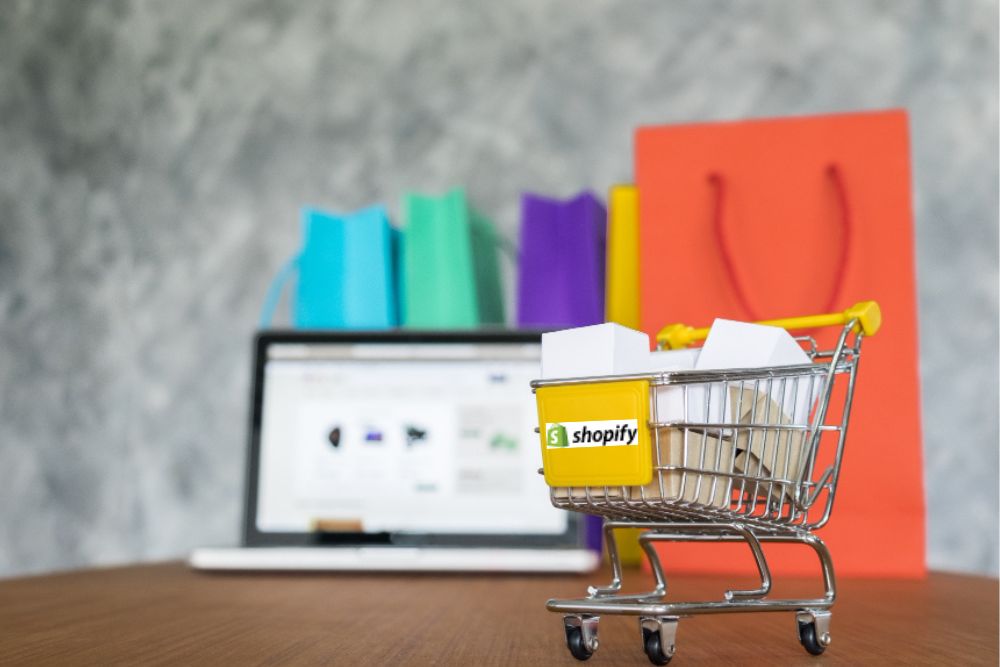Attracting traffic to your Shopify store is required for the growth and success of your online business. A significant product and attracting targeted traffic to your website are equally important. Fortunately, several effective digital marketing strategies can help you generate more website traffic, boost sales and establish a strong online presence. Below are some of the most impactful strategies for driving traffic to your Shopify store.
Search Engine Optimization (SEO)
SEO is one of the most effective and long-lasting strategies to drive organic traffic to your Shopify store. Optimizing your store’s pages for search engines like Google helps you increase your website’s visibility and improve your chances of ranking higher in search results. Here’s how you can optimize your Shopify store:
Keyword Research:
Start by identifying the right keywords for your products and services. Use tools like Google Keyword Planner, Ahrefs, or SEMrush to discover relevant keywords with good search volume. Focus on both short-tail and long-tail keywords to capture various search intents.
On-Page SEO:
Optimize product pages, blog posts, and category pages by including your target keywords in key areas such as page titles, meta descriptions, headers, and image alt text. Don’t forget to create SEO-friendly URLs and improve site navigation to make it easier for search engines to index your pages.
Content Creation:
Integrating high-quality, informative, and engaging content can also boost your SEO efforts. Start a blog on your Shopify store and publish relevant articles to your target audience. Focus on answering customer questions, providing product guides, or offering tips related to your industry.
Site Speed Optimization:
Search engines favor websites that load quickly. Use Shopify apps or tools like Google PageSpeed Insights to optimize your site’s speed by reducing image sizes, enabling browser caching and using a content delivery network (CDN).
Social Media Marketing
Social media platforms such as Facebook, Instagram, Twitter and Pinterest offer vast opportunities to drive traffic to your Shopify store. With billions of active users, social media provides a perfect space to engage with your target audience, build brand awareness and promote your products.
Platform Selection:
Choose the right social media platforms based on where your target audience spends the most time. For example, Instagram and Pinterest are ideal for visually appealing products like fashion, jewelry and home decor, while Facebook and Twitter may work well for a broader range of industries.
Paid Ads:
Utilize paid ads on social media platforms to drive targeted traffic to your Shopify store. Facebook and Instagram Ads, for instance, allow you to target users based on interests, demographics, behaviors and more. Utilize retargeting ads to capture visitors who have previously interacted with your site but haven’t made a purchase yet.
User-Generated Content (UGC):
Encourage your customers to share photos or videos of them using your products and feature their content on your social media profiles. This not only builds trust and credibility but also acts as free advertising, attracting more traffic to your Shopify store.
Influencer Marketing:
Collaborate with influencers in your field to promote your products. Influencers already have a loyal following and their approval can drive targeted traffic to your store. Be sure to choose influencers whose audience aligns with your brand values and target demographic.
Email Marketing
Email marketing is a powerful tool for boosting leads, retaining customers and driving traffic back to your Shopify store. With a well-executed email campaign, you can keep your audience informed about new products, promotions and updates, motivating them to review your store and make a purchase.
Building an Email List:
Start building your email list by offering incentives such as discounts, exclusive content or free resources in exchange for users’ email addresses. You can add email options on your website, blog and product pages to capture leads.
Personalization:
Segment your email list based on customer behavior, preferences and past purchases. This will allow you to send personalized emails that are more likely to engage recipients and drive them back to your Shopify store.
Automation:
Automate email campaigns such as welcome emails, left cart reminders and post-purchase follow-ups. This will save time and ensure that you’re consistently reaching out to potential customers, keeping your store top of mind.
Paid Search Advertising (PPC)
Pay-per-click (PPC) advertising is a quick and effective way to drive targeted traffic to your Shopify store. Platforms like Google Ads allow you to create ads that appear in search results when users search for relevant keywords. Here’s how you can make the most of PPC:
Keyword Targeting:
Choose keywords that closely match your products or services. Consider both high-intent keywords (e.g., “Web development uae”) and long-tail keywords (e.g., “Best web development services in Dubai”). Conduct A/B testing to identify which keywords and ad copy perform best.
Landing Page Optimization:
Create dedicated landing pages for your PPC campaigns. Ensure that these pages are optimized for conversions with clear calls to action (CTAs), fast load times and relevant content that matches the ad’s messaging.
Budget Management:
Set a daily or monthly budget for your PPC campaigns to avoid overspending. Monitor your ad performance and adjust your budget allocation to maximize return on investment (ROI).
Affiliate Marketing
Affiliate marketing allows you to tap into a network of affiliates who promote your products in exchange for a commission on sales they generate. This strategy can help drive targeted traffic to your Shopify store and increase brand exposure.
Set Up an Affiliate Program:
You can create an affiliate program using apps like Refersion or Affiliatly on Shopify. These apps enable you to track affiliate sales, manage commissions and recruit affiliates for your store.
Choose Affiliates Wisely:
Select affiliates who have a relevant audience and a strong online presence. They can be bloggers, influencers or content creators who already have a loyal following in your field.
Provide Marketing Materials:
To ensure your affiliates are successful, provide them with marketing materials such as banners, product images and promotional content. This will make it easier for them to promote your products effectively.
Retargeting and Remarketing
Retargeting is a powerful strategy that targets visitors who have interacted with your Shopify store but left without making a purchase. By showing targeted ads to these visitors across different platforms, you can remind them of your products and encourage them to return and complete the purchase.
Retargeting Ads:
Use tools like Facebook Pixel or Google Remarketing to track visitors who leave your store without purchasing and display customized ads to bring them back. These ads can show specific products they viewed or offer a discount to encourage them to make a purchase.
Email Remarketing:
Send follow-up emails to customers who abandoned their carts or browsed your store without purchasing. Include product recommendations, time-sensitive discounts or free shipping offers to draw them back.
Content Marketing
Content marketing can help drive traffic to your Shopify store by providing valuable, shareable content that attracts your target audience. Creating blog posts, videos, podcasts, or infographics can build brand authority and improve your website’s SEO.
Content Creation:
Create in-depth blog posts that answer common customer questions or provide useful tips related to your products. How-to guides, product reviews and tutorials are all great ways to engage your audience.
Video Marketing:
Video is one of the most engaging types of content. Create product demos, unboxing videos or customer testimonials and post them on YouTube and your Shopify store. Videos help customers make more informed purchasing decisions and increase your store’s visibility.
Collaborate with Industry Bloggers:
Partner with influencers or bloggers in your field to guest post on their websites. This can drive traffic to your store by exposing your brand to a wider audience.
Driving traffic to your Shopify store requires a combination of different digital marketing strategies. If you’re focusing on SEO, social media marketing, paid ads or email marketing, consistency is the main key. Implementing these strategies and continuously optimizing your efforts helps you to increase your store’s visibility, attract more targeted visitors and ultimately boost sales. Remember, each business is unique, so experiment with different tactics and refine your approach to achieve the best results.




